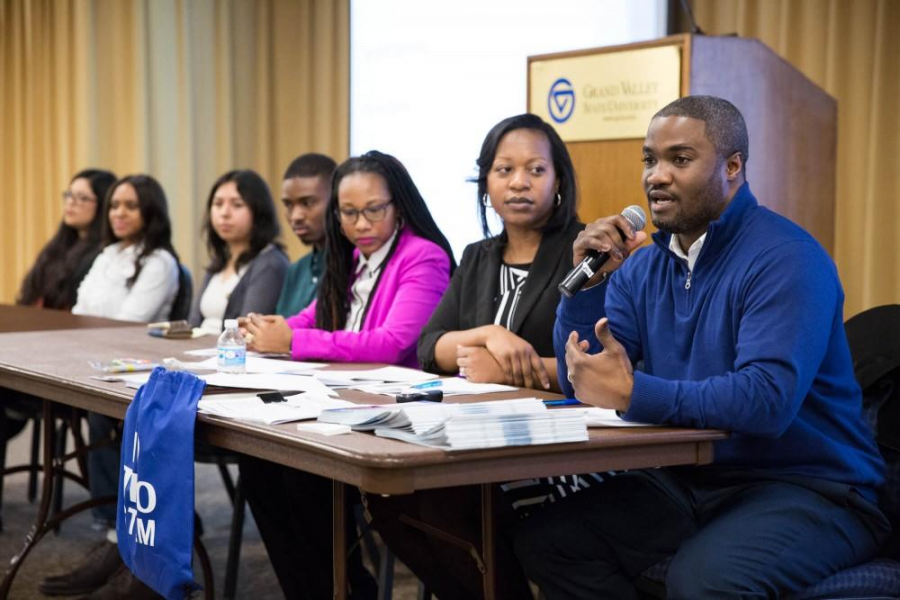Teach-In 2019 makes new steps in discussion of inclusion, equity and diversity
Nov 18, 2019
Each year since 2014, Grand Valley State University has endeavored to bring students together through discussion of difficult topics like systems of oppression, discrimination and social justice at their annual Teach-In. This year’s event saw many students, faculty and staff joining together in order to welcome new subject matter into their discussions, alongside popular themes that returned from years prior.
Unlike previous Teach-Ins, which lasted one day, this year’s program ran for two. On Nov. 6, presenters and attendees gathered in the Seidman College of Business, followed by more session on Nov. 7 in the Kirkhof Center. The additional time and space allowed the program to expand and give the individuals attending more ways to participate than they would have had otherwise.
Professor Shawn Bultsma is a regular presenter at the annual Teach-In who also serves as a moderator for the presentations of others. He believes strongly in the positive impact of not only this year’s Teach-In on the GVSU community, but that of every one prior.
“Grand Valley is not immune from the systemic racism that permeates US society,” Bultsma said. “Consequently, it is no surprise that both explicit and implicit biases influence our comments and interactions as we interact with each other. These realities underscore the urgent need for staff and faculty to work tirelessly toward a more equitable and inclusive environment where all feel valued.”
Over 40 sessions contributed to the empowerment that many feel after witnessing people come together every year during an event that never ceases to be a source of inspiration and motivation for those who attend.
“My favorite part about the Teach-In is our partnership with students,” Bultsma said. “Participating in student led sessions reminds me how committed many of our students are to efforts of inclusion and equity. It is inspiring when I see students who are unsettled by status quo and commit to creating the kind of environment where all can thrive.”
Lavar Green-Jackson, student presenter for the sessions “You can study abroad, too!” and “GVSU Through the Lens of Black Men,” is a senior undergraduate student who has presented at multiple Teach-Ins.
“The sessions are different each year but I still come out feeling empowered and socially rejuvenated after attending them,” Green-Jackson said. “Each year gives me the opportunity to learn more and grow from the things I’ve learned.”
Another student presenter, Sughnen Yongo is a new graduate at GVSU. This year, she gave her first ever Teach-In session on African women’s hair, “Nappy Glory: A pedagogy on the black woman’s hair and the politics behind it,“ to great reviews. For her, the Teach-In presented the opportunity to add her voice to the movement of inclusion and acceptance of every member of this community.
“My favorite part of the event was sharing my story with a receptive audience,” Yongo said. “I wanted to spread awareness about the issue of black women’s hair and the stigma that often comes along with certain types and textures of black women’s hair.”
The GVSU community has much to gain from attending Teach-In sessions, the presenters of which are all working together towards making a stronger and safer climate for the university.
“Take advantage of this opportunity,” said Jennifer Palm, co-presenter for one of the most popular events each year, titled “‘Ewww, that’s Gross!’ Myths, Stigmas, Taboos and Why Women’s Health Conversations Are So Messy.” “I’m not sure if everyone realizes this, but the Teach-In is not something that happens at every university. That Grand Valley makes this available to all students, staff, and faculty for free every year is notable. It gives our community a chance to come together and have a discussion outside the classroom on critical topics.”
With the conclusion of this year’s forward-thinking sessions and discussions, we as a campus community have taken one more step towards making our university a place of inclusion and acceptance.


























